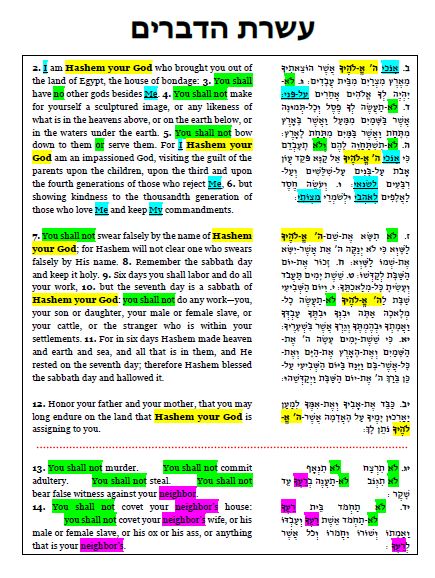Use the text below to answer the following questions. You can find a printable PDF version of the text attached.
1. Take a look at the blue highlighted words which are found in the first two commandments (verses 2-6). What is the difference between these commandments and the rest?
Look at Exodus 20:15 and Rashi’s commentary on Exodus 19:19. How can these sources help us understand this difference?
2. Count the number of commandments that you find in the text. Are there really only 10? Where does the traditional phrase of “Ten Commandments” come from?
Look at Deuteronomy 4:13. How might we more accurately describe the “Ten Commandments” according to this verse? How is the phrase עשרת הדברים translated? Does it necessarily have to mean “commandments”?
We can conclude that there are ten STATEMENTS, and each could contain within it more than one commandment.
[The Sefer HaChinuch enumerates 15 separate commandments, 25-38; 416]
Take a look at the green highlighted words. How many negative commandments can you count? How are they divided between both tablets? (the red dotted line marks the separation between the two tablets)
3. One of the most popular opinions regarding the division of the commandments holds that the first tablet contains the commandments between man and God, while the second tablet contains the commandments between man and fellow man. Look at the yellow and purple highlighted words. What can we infer about the theme of each tablet? Does it support this claim?



